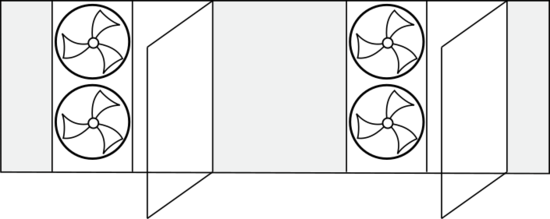Subway Station Fan Cooling |
August 29th, 2019 |
| cooling, ideas, transit |
Subway stations, being underground, have enormous heat capacity. This means they're great candidates for night ventilation. Run an enormous amount of air through the stations at night, and they'll stay cool all day. The cool times of day are also the times when passenger volumes are at their lowest, so you have more options for reconfiguring the space.
For example, in stations with doors you could add another door to the the door frame with a pair of fans mounted on it. During the day it would be open and out of the way, while at night it would be closed and people could use one of the other doors:
In general, if you can get enormous crowds of people in and out, you can also get enormous amounts of air through.
Why don't we see subways set up to use this kind of ventilation?
Comment via: facebook, substack
